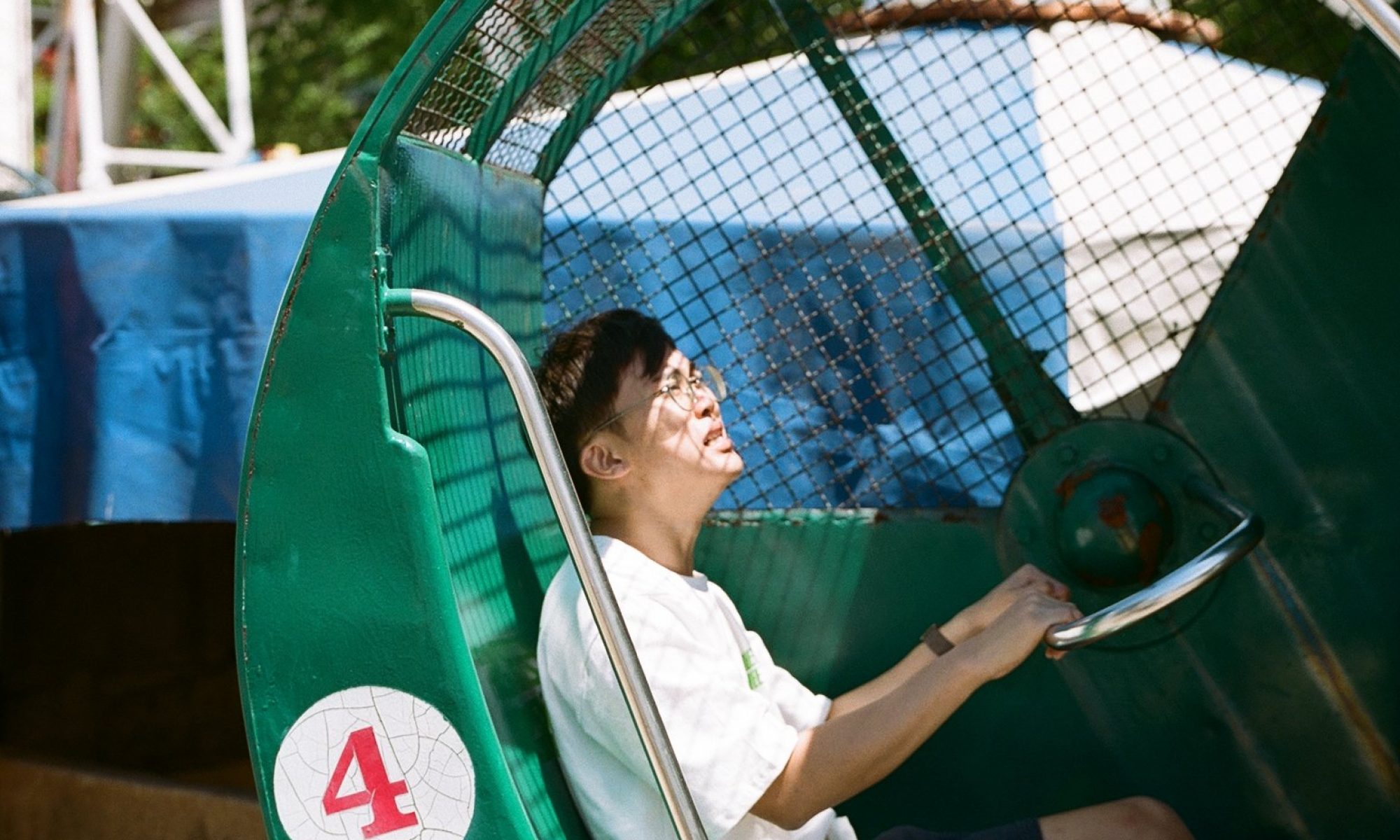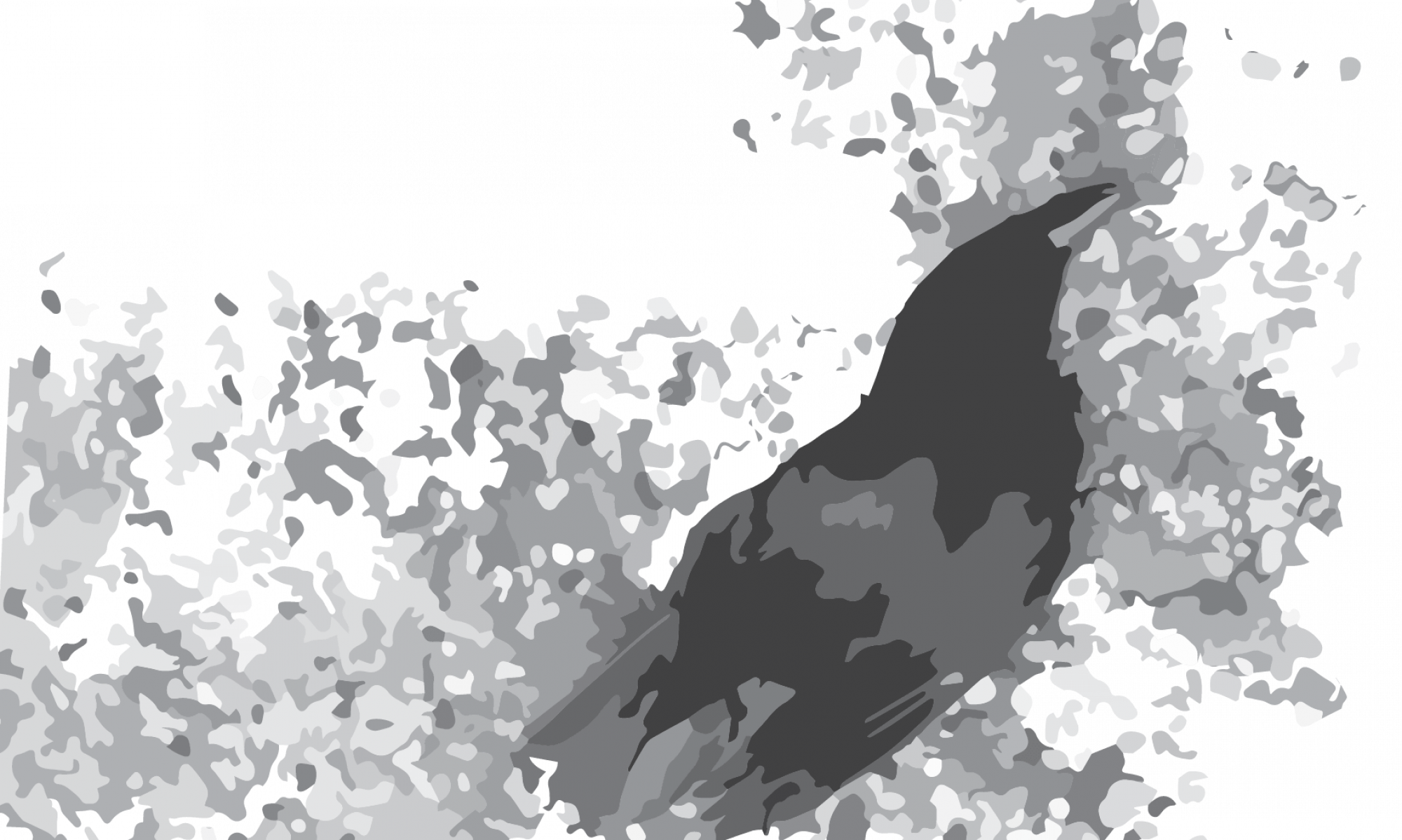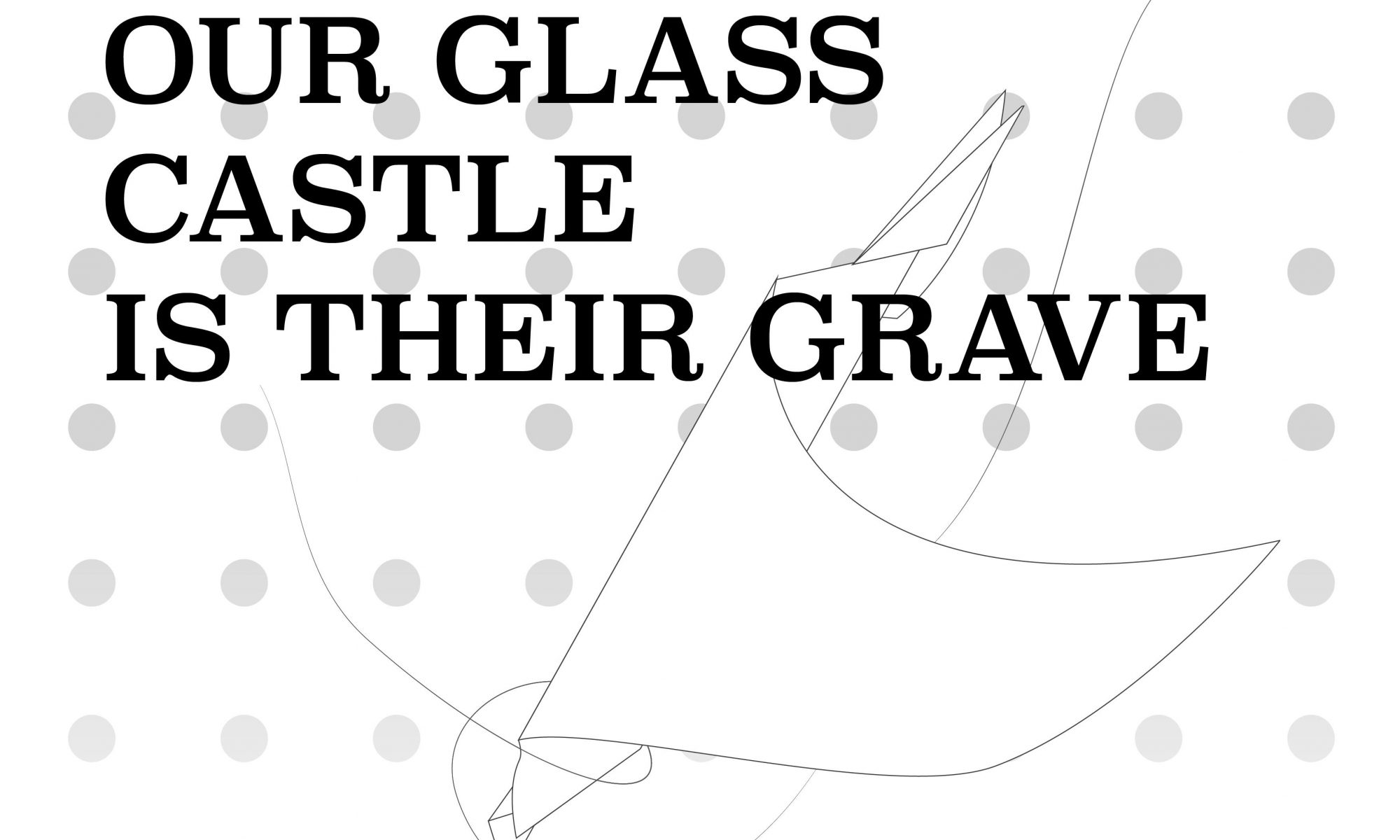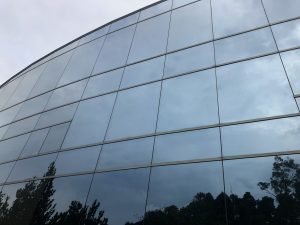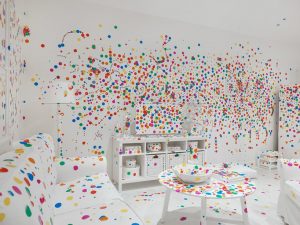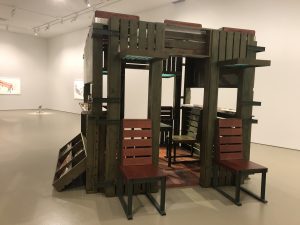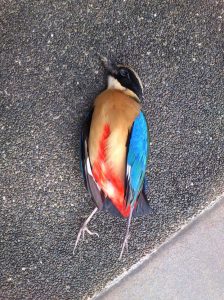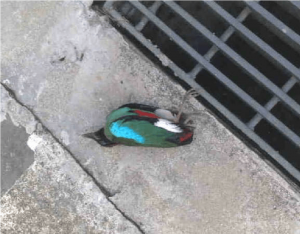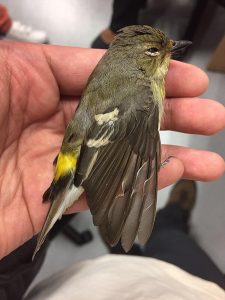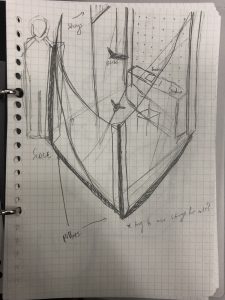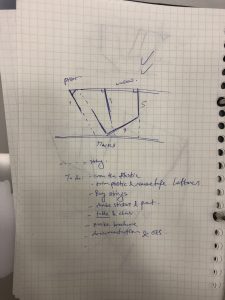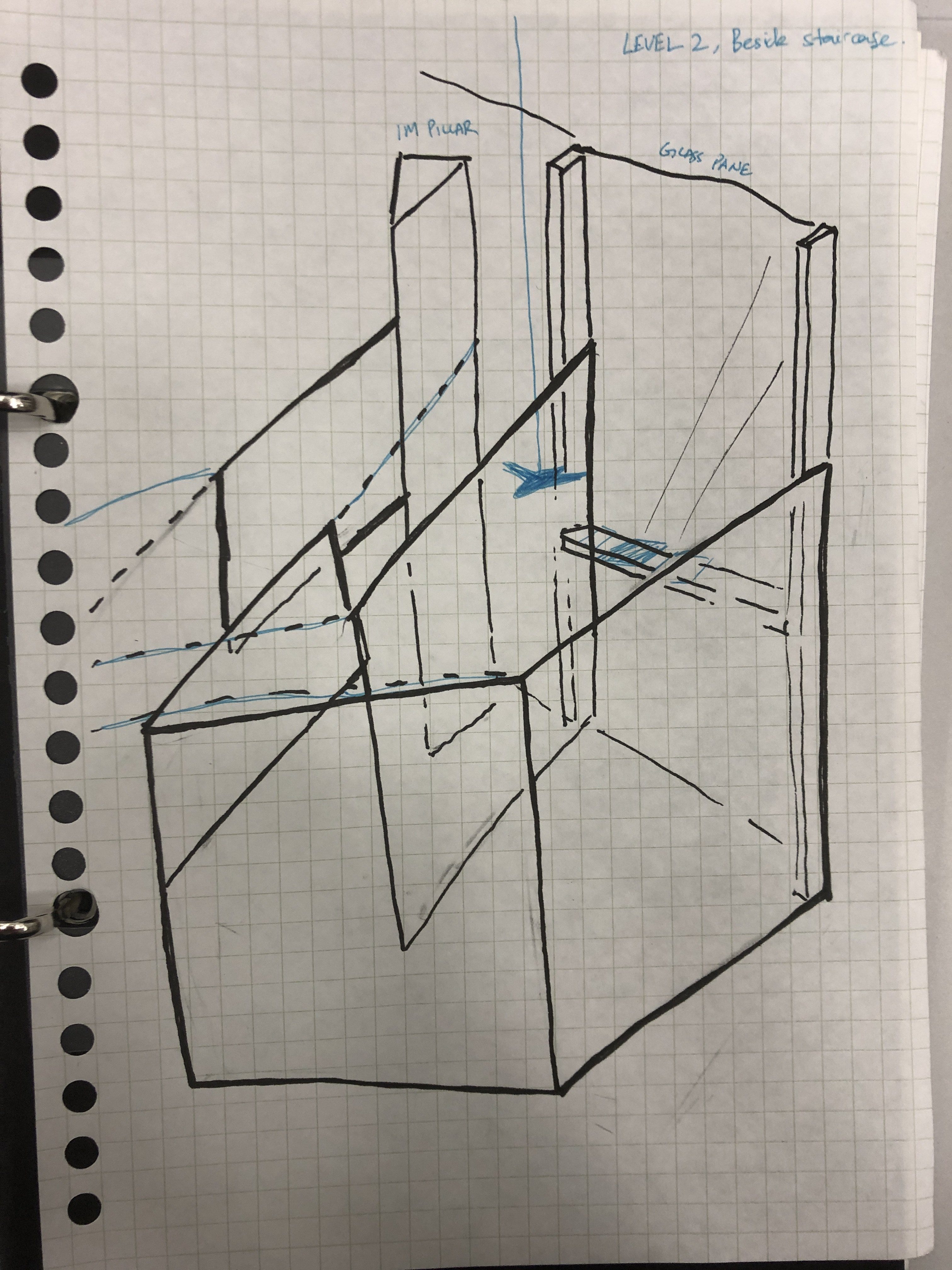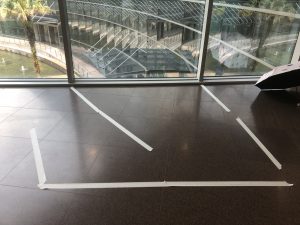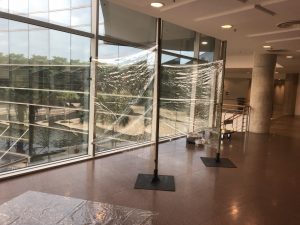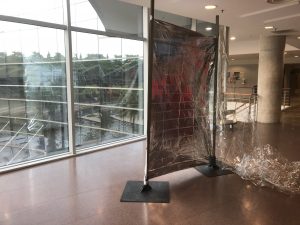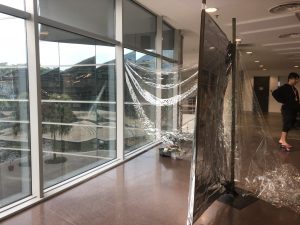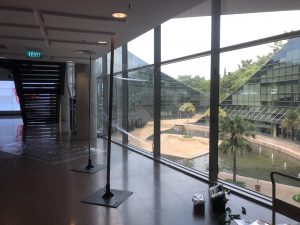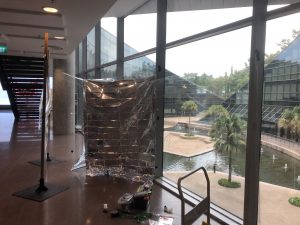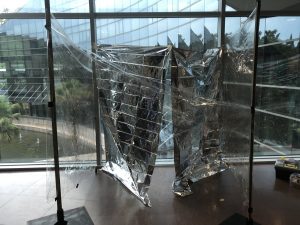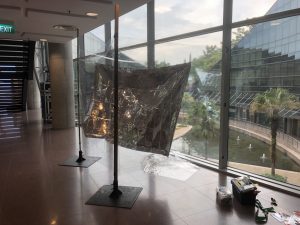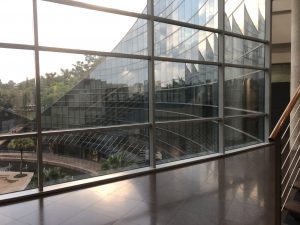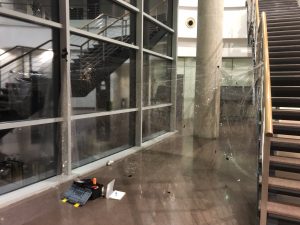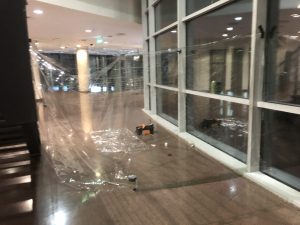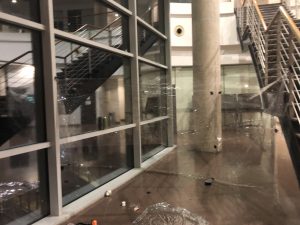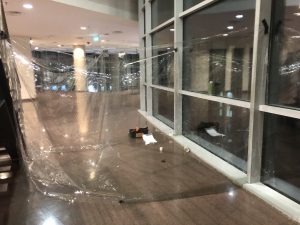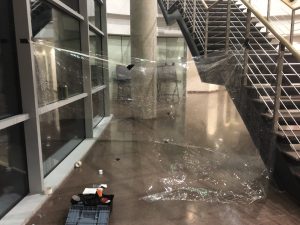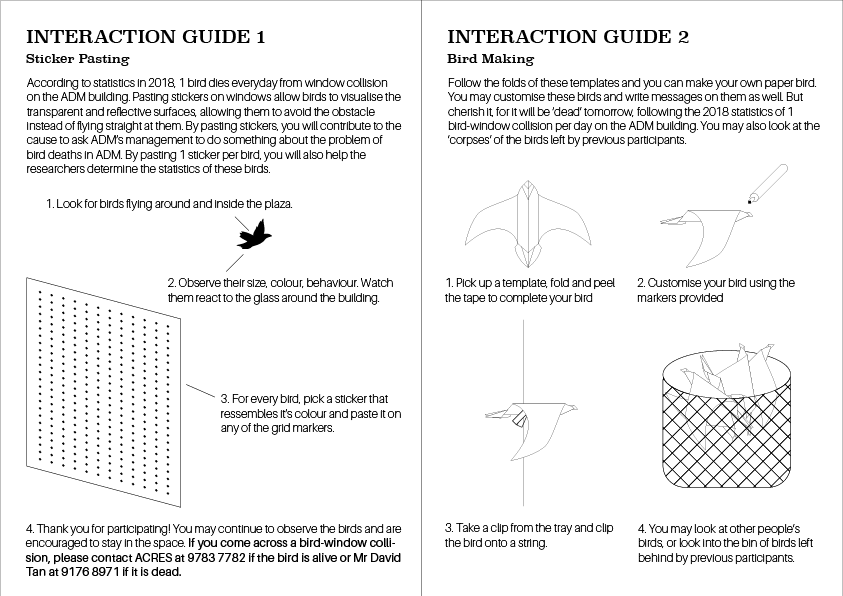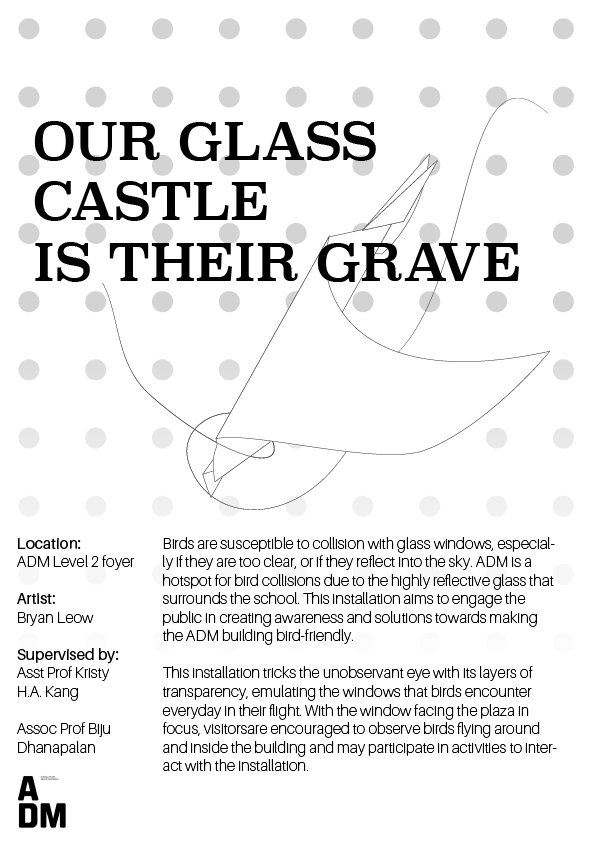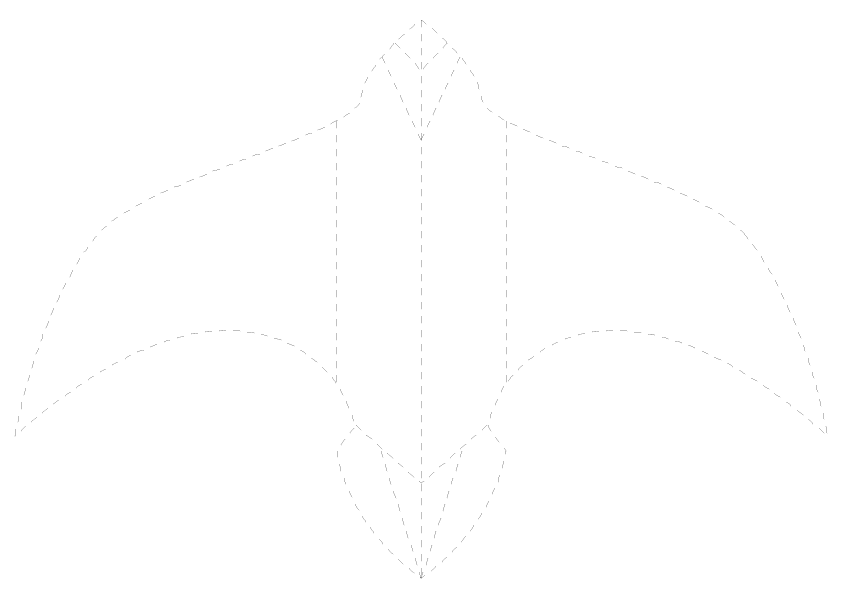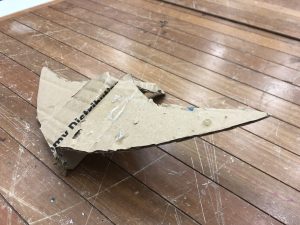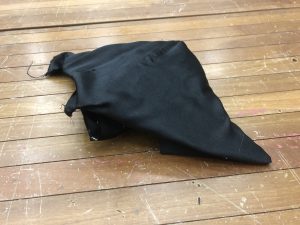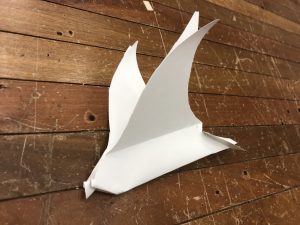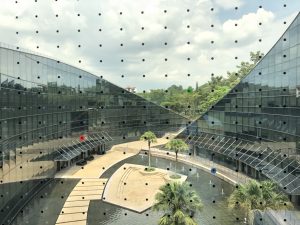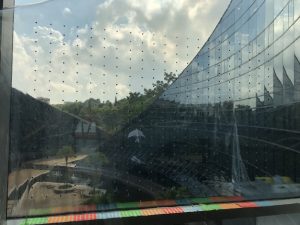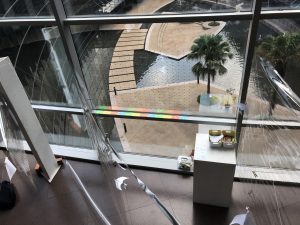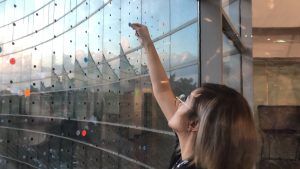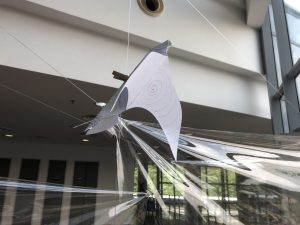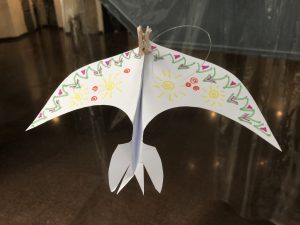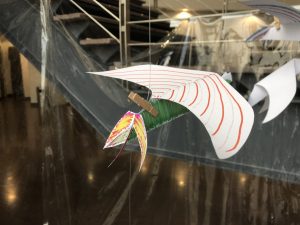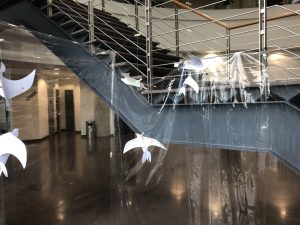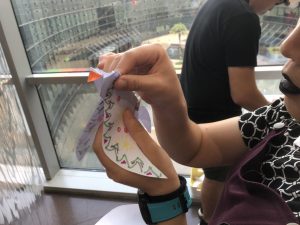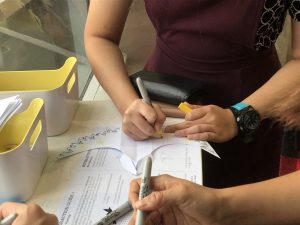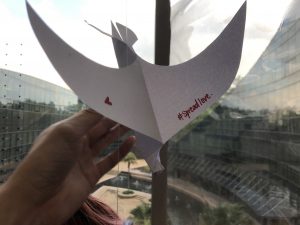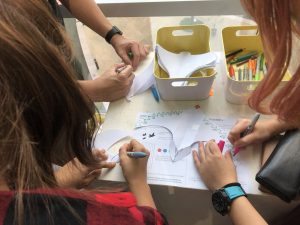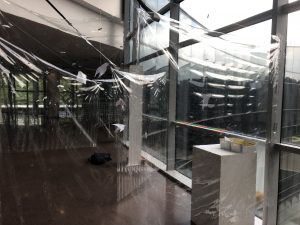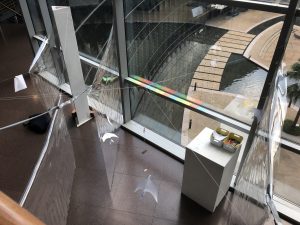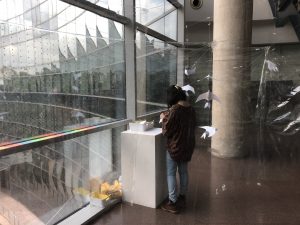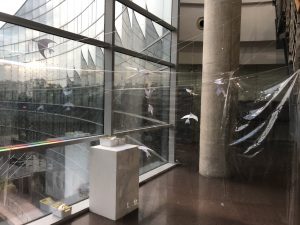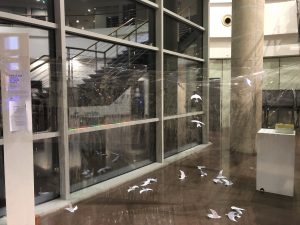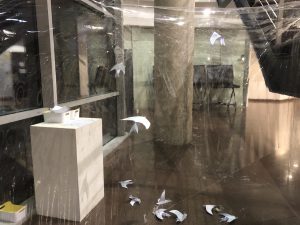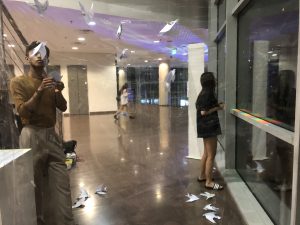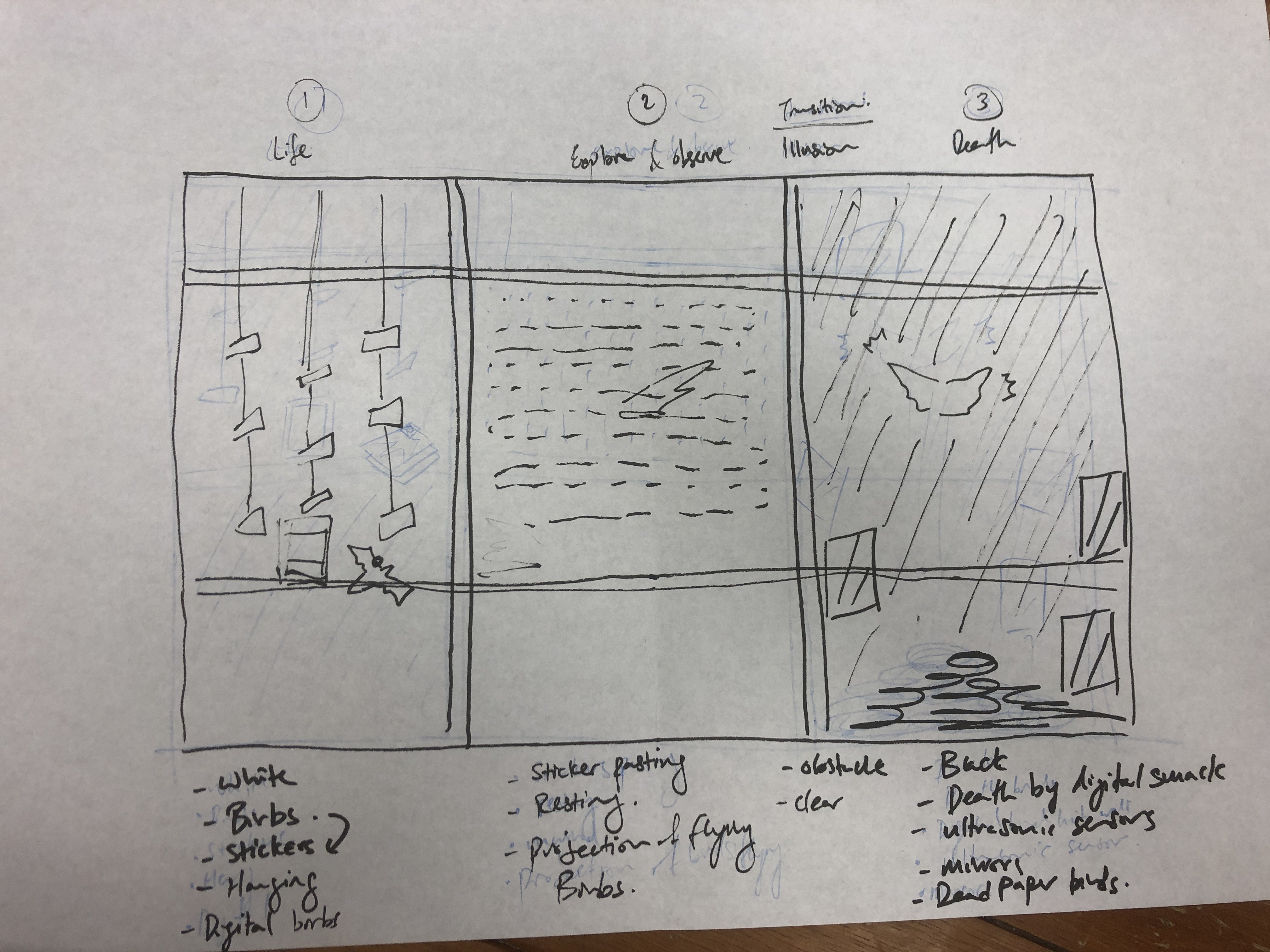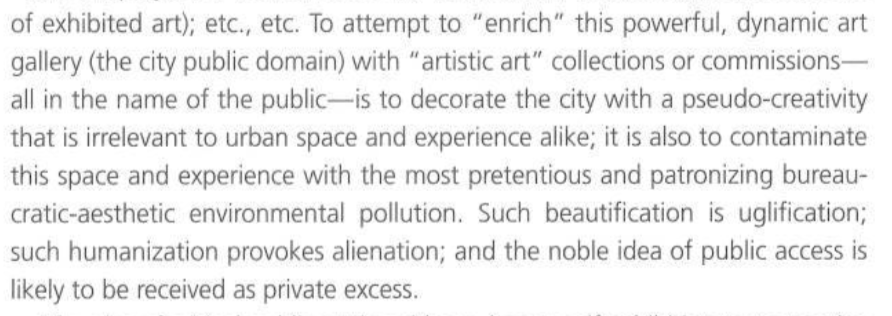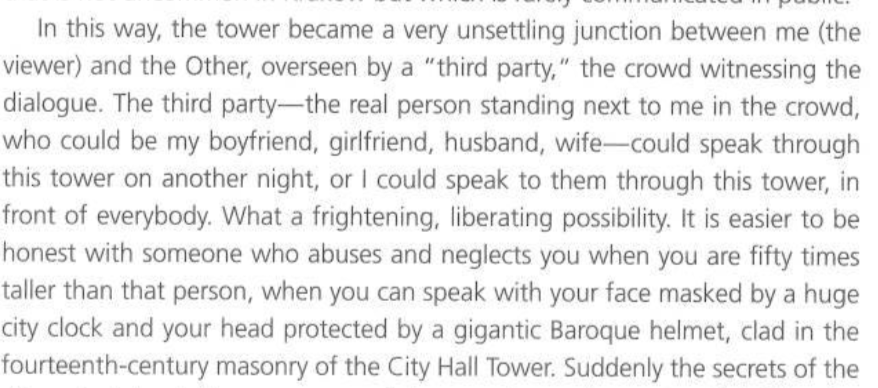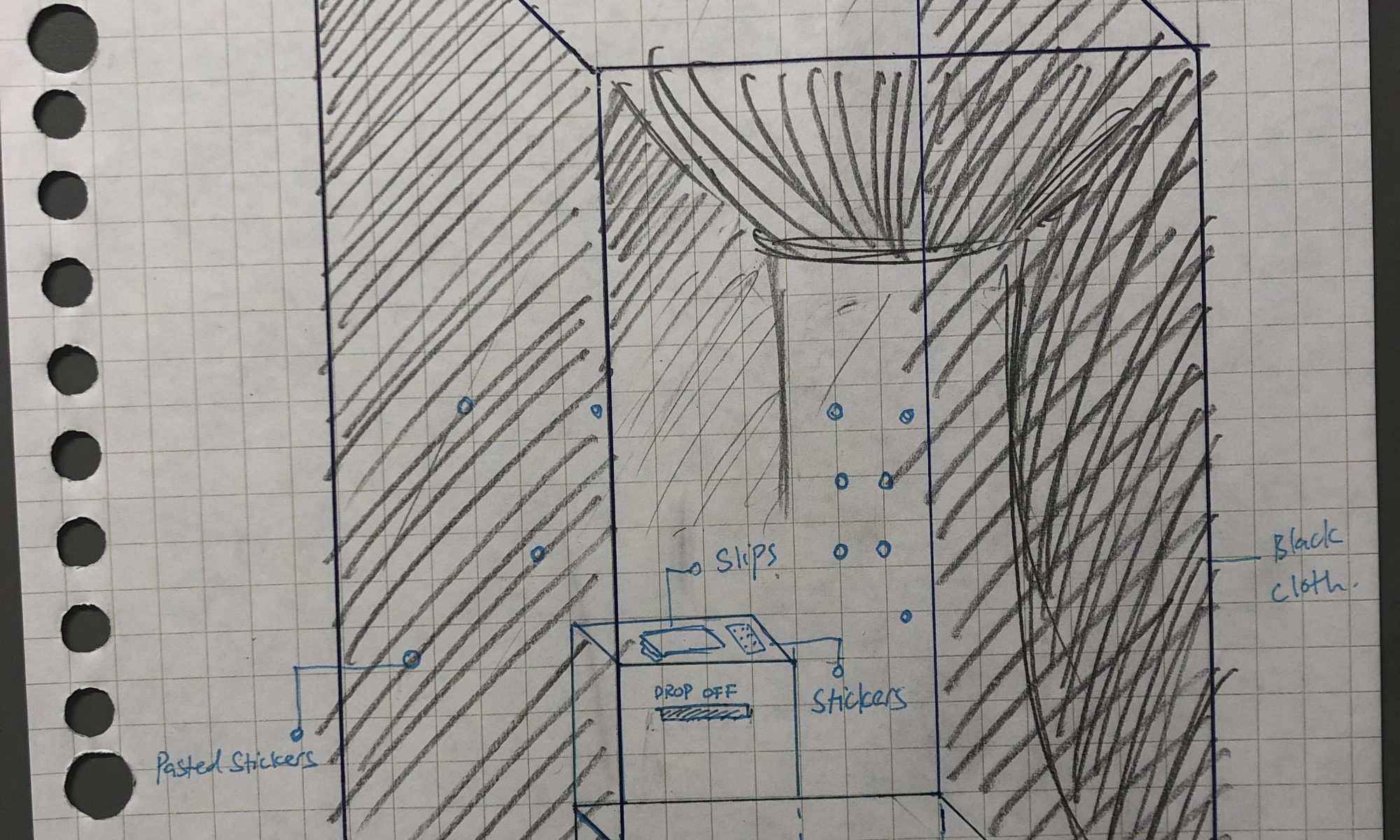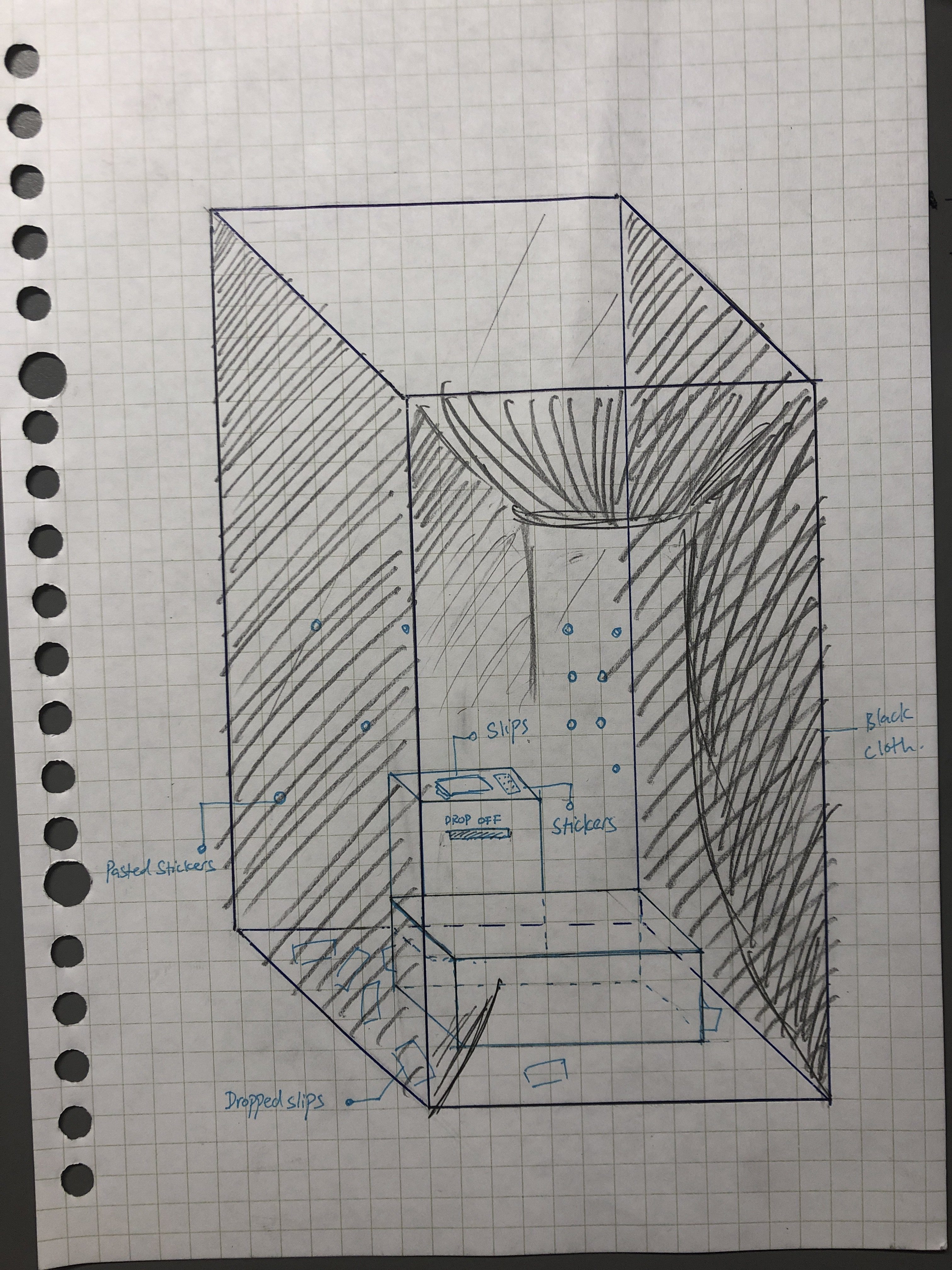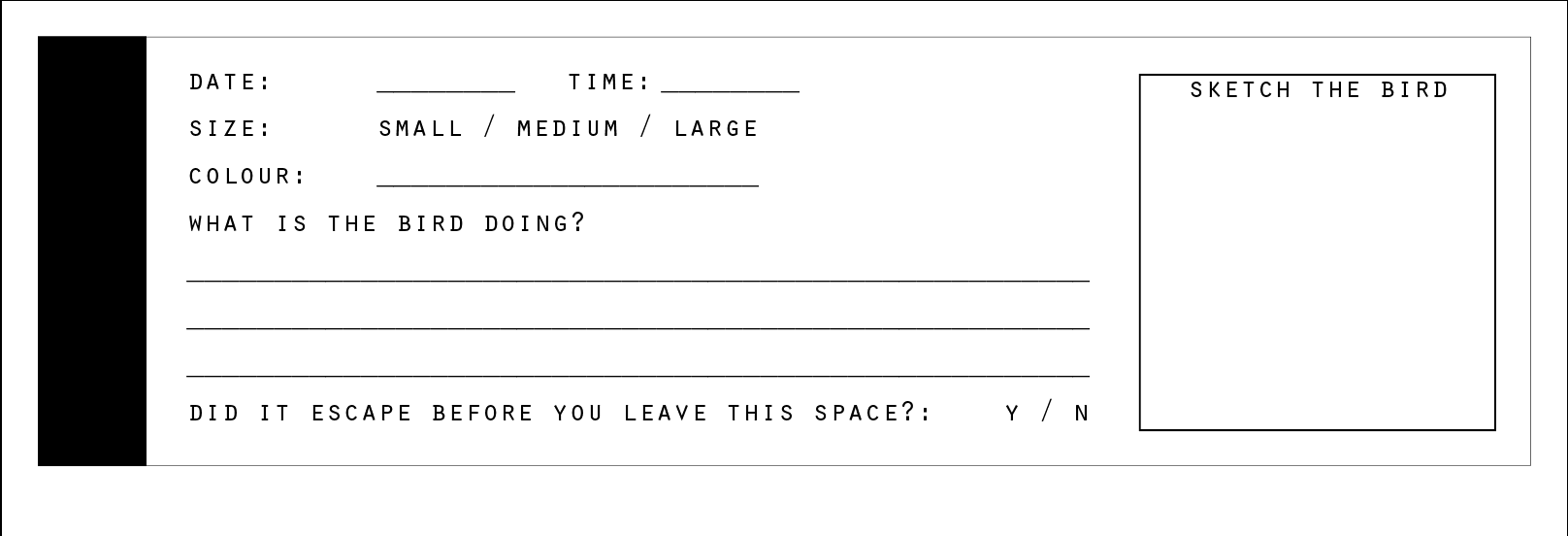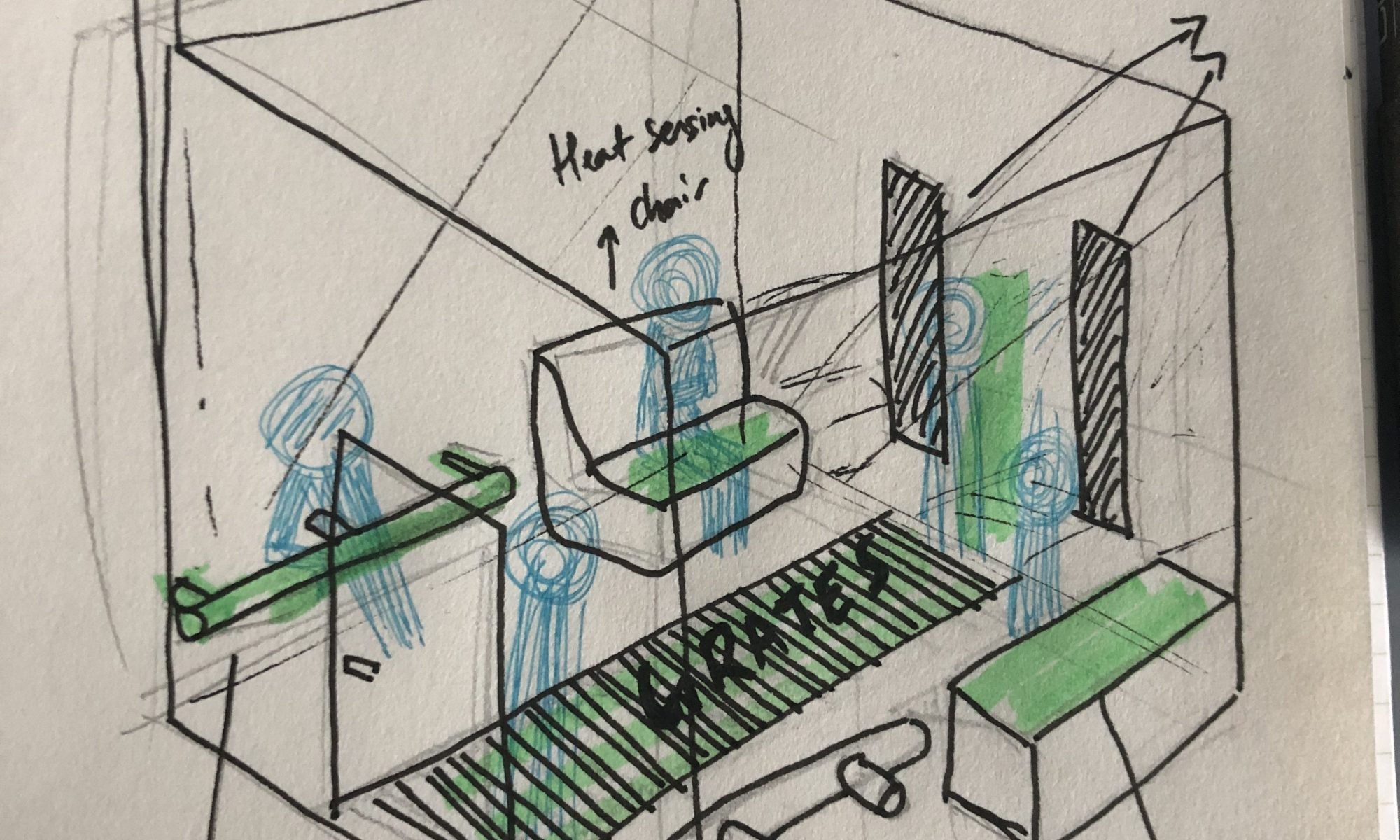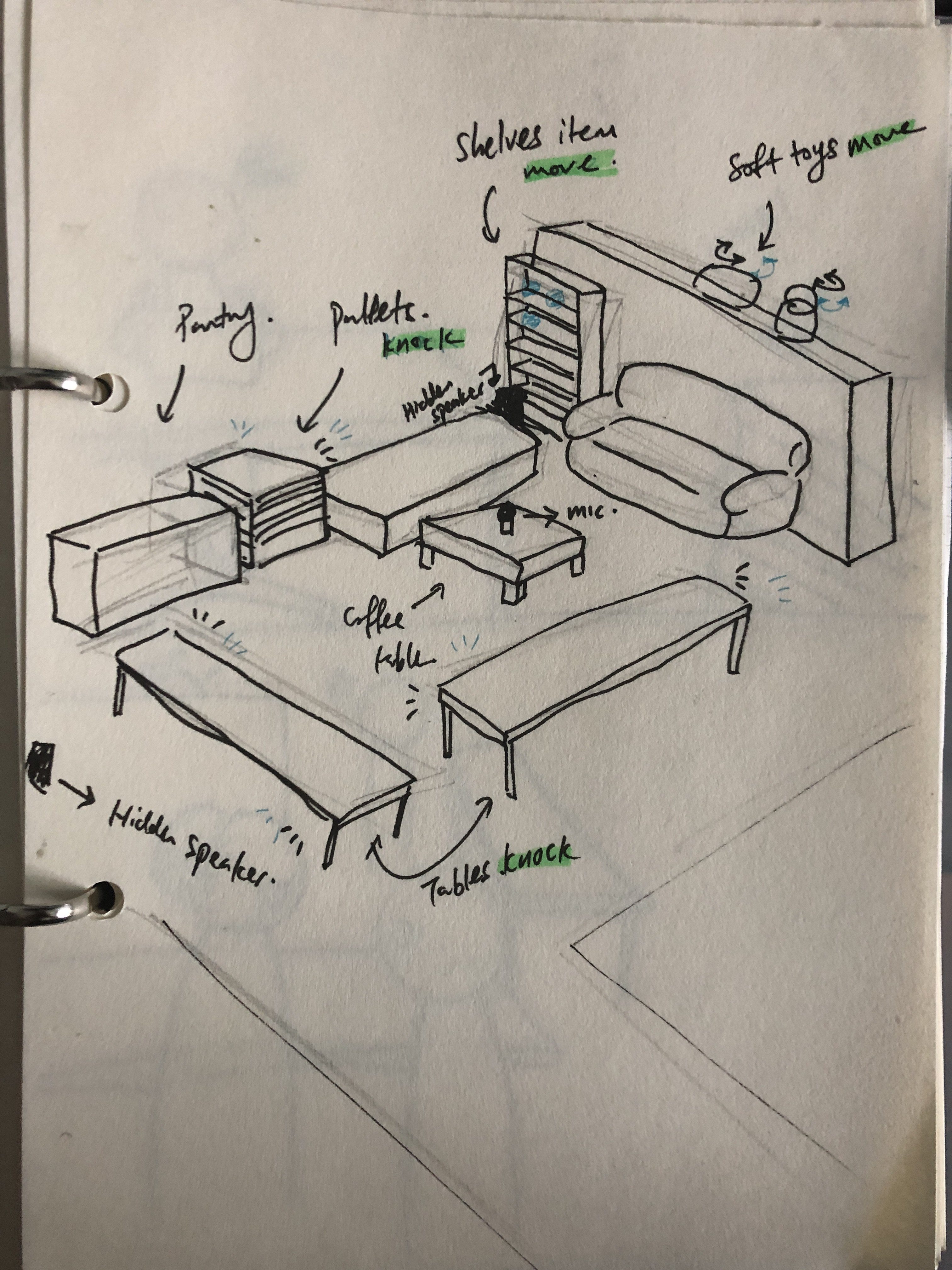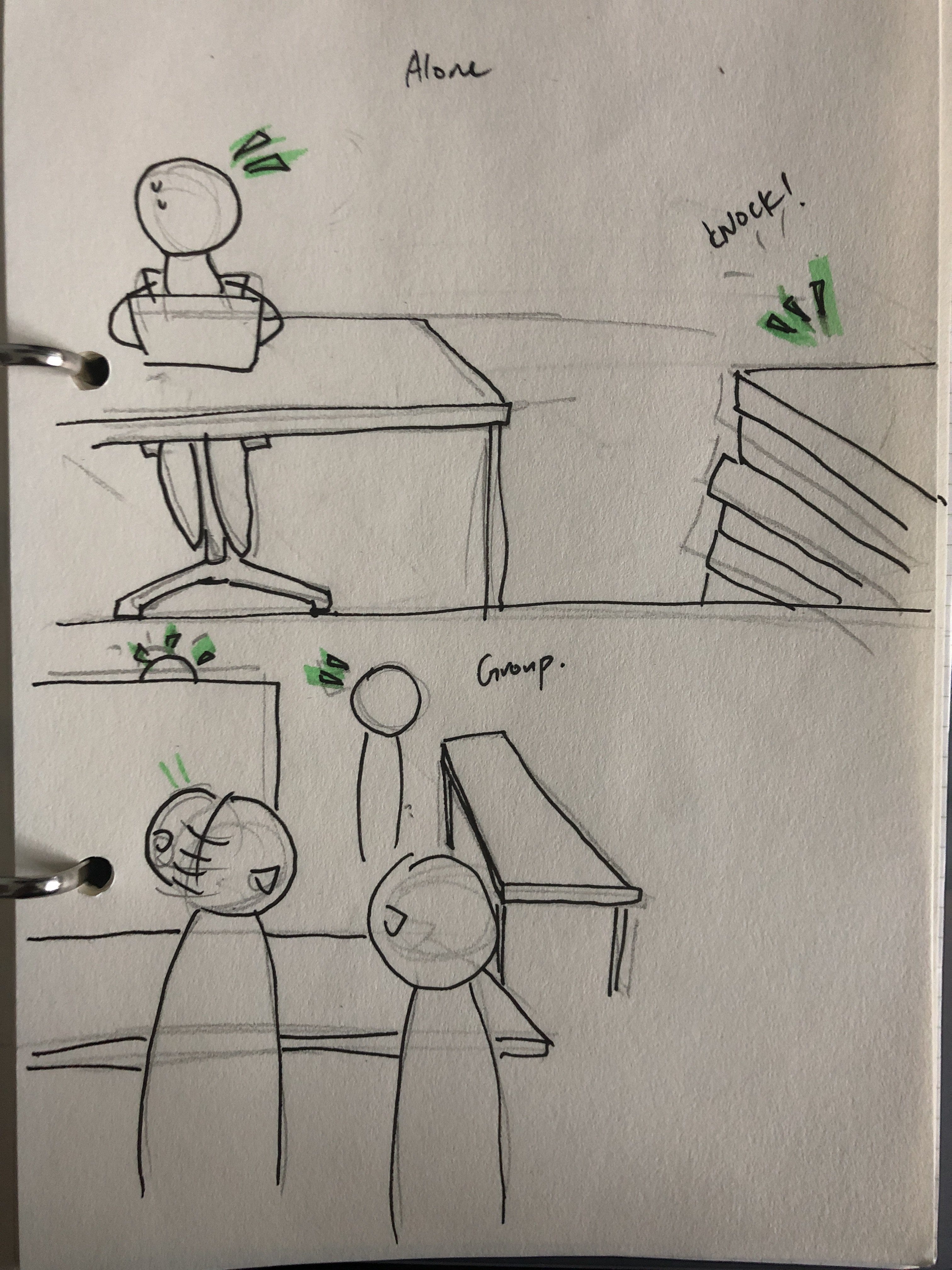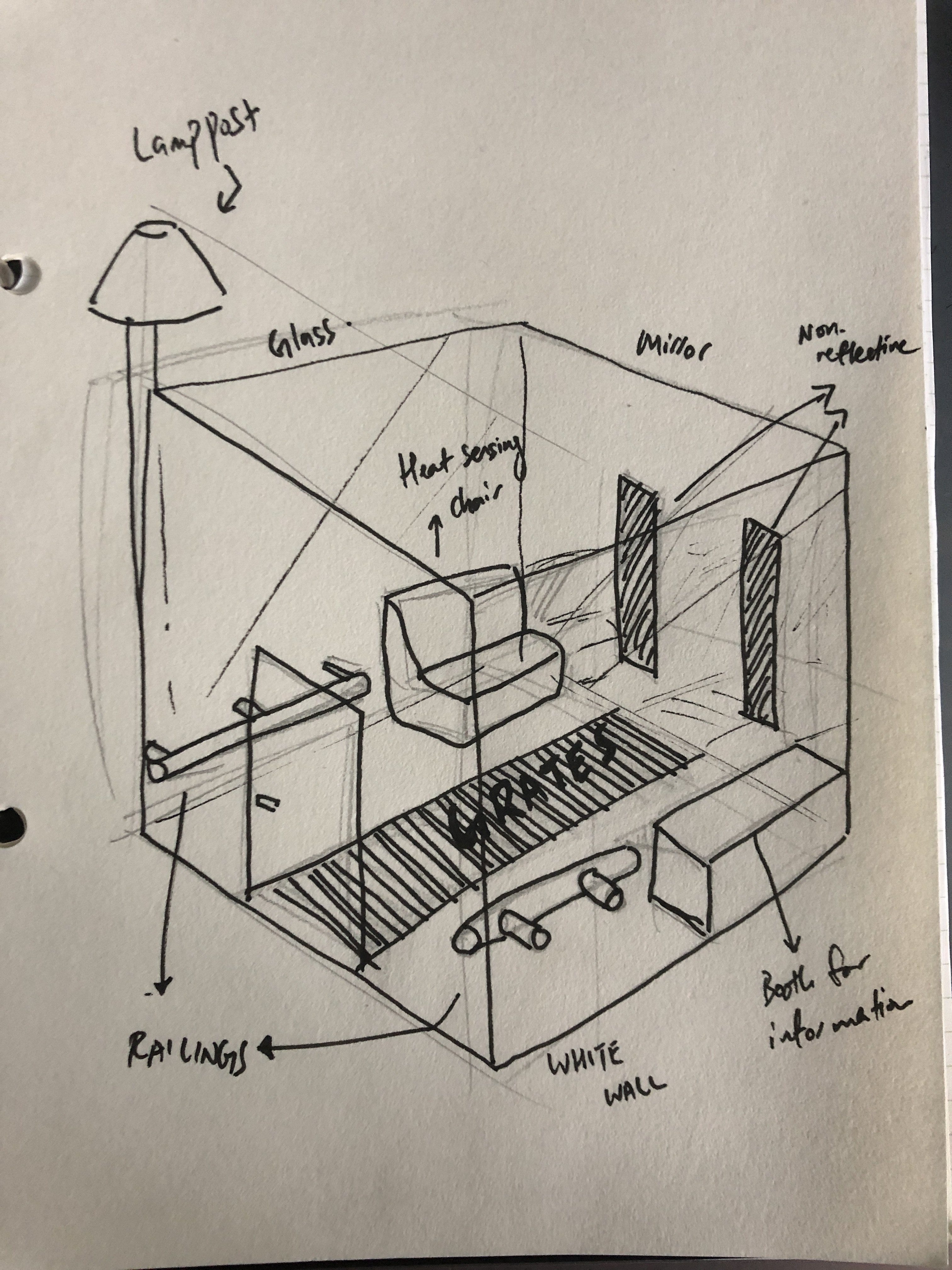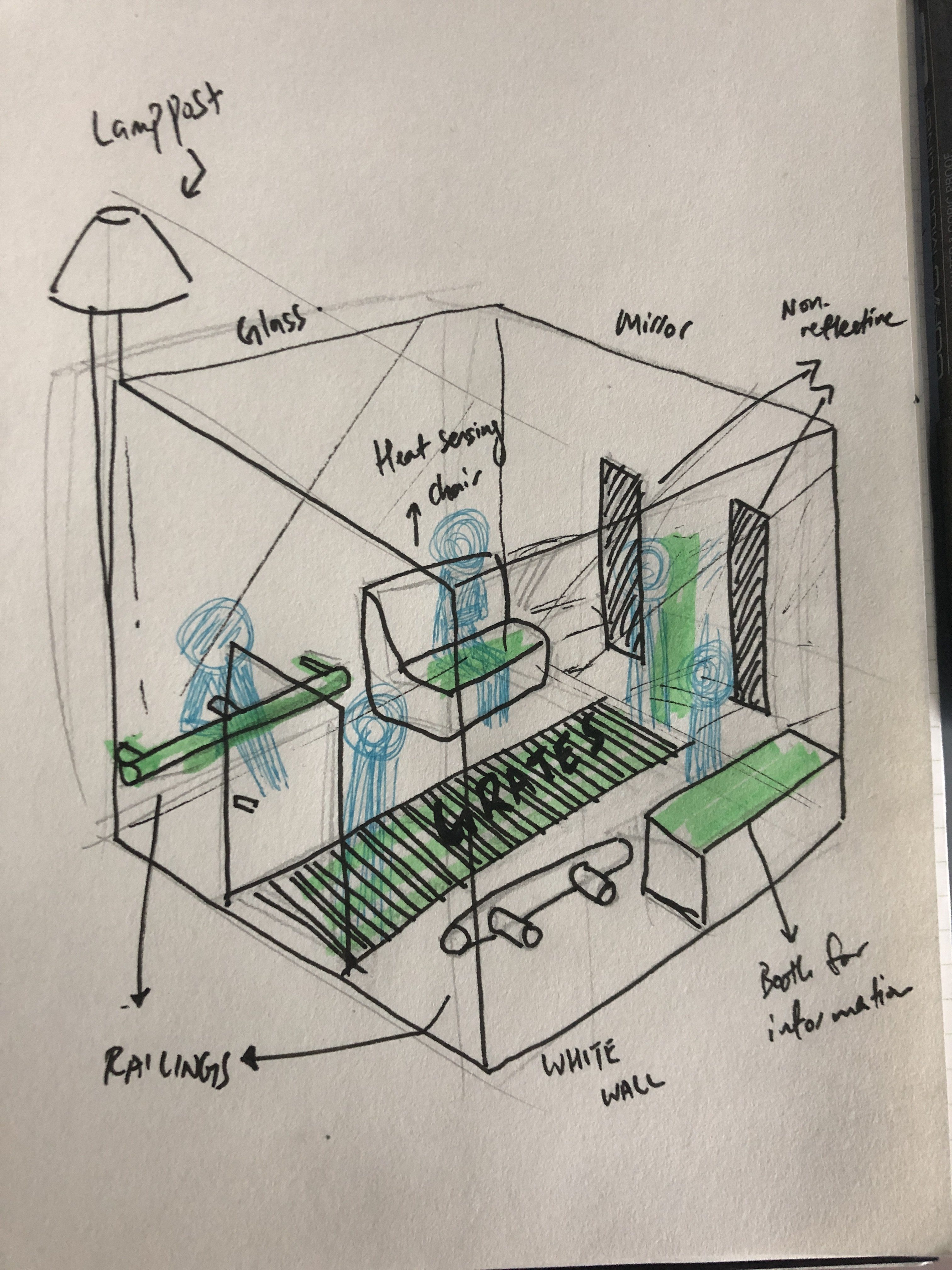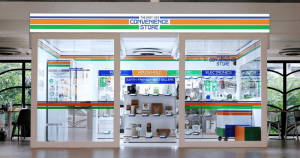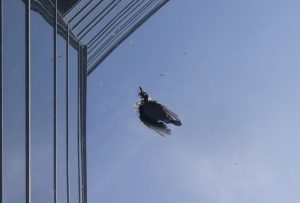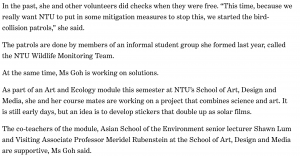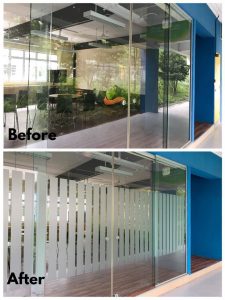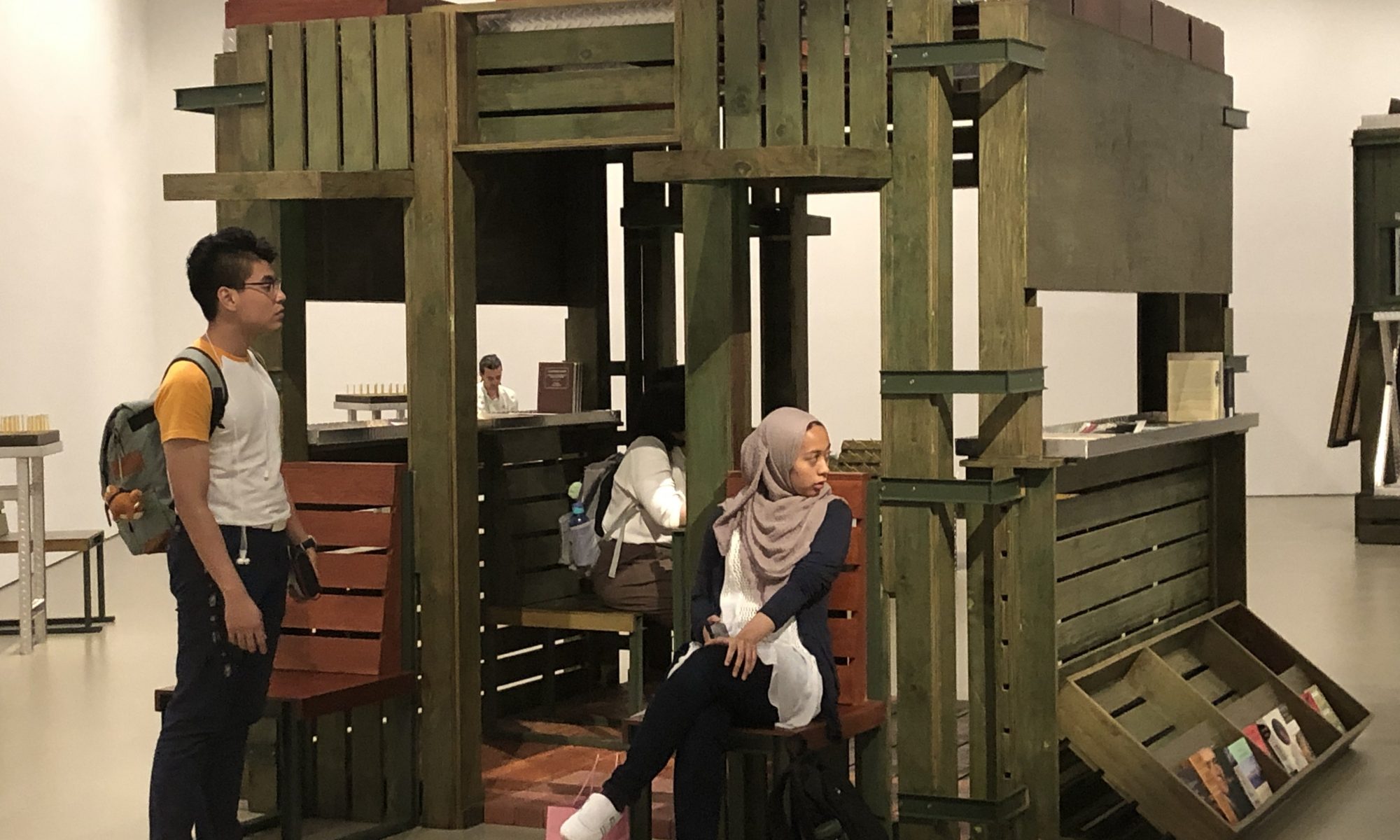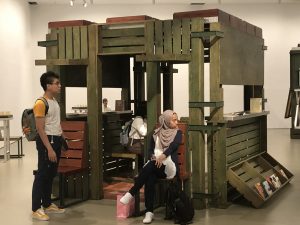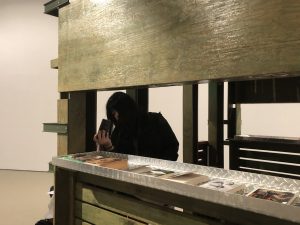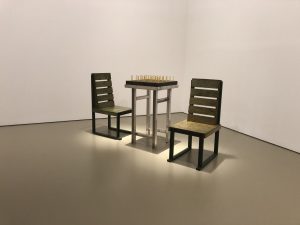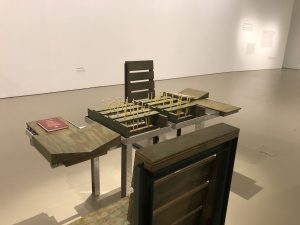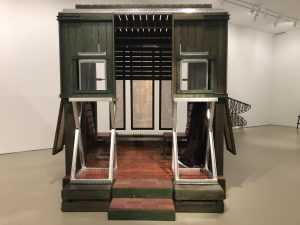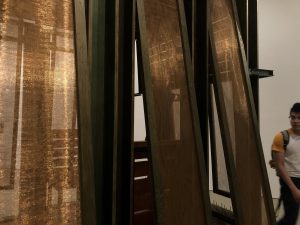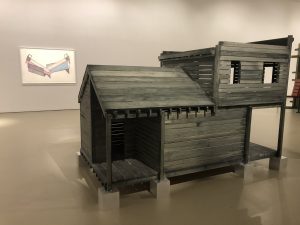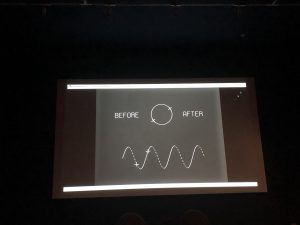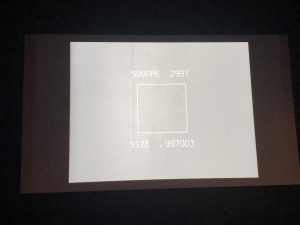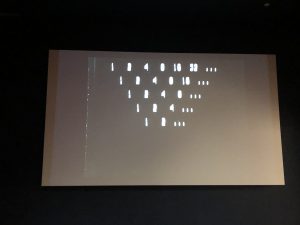Updates:
After the last consultation, I was told to try building the space and test physically as there is no way to find out how the experience will be like without testing. However, there was a lot of difficulty in booking a space which I will briefly talk about later. I decided to drastically reduce the size of the installation after that. This is because the whole experience is clunky in my opinion and it will require too much material. But that’s also untested.
I spent >$100 the next few days buying materials like cloths and stickers, while I booked a few equipments and pillars that I can use to fix up the installation. Unfortunately, it was near crunch time for many modules so there wasn’t time to setup and test physically. From that, I learnt that I must really start testing earlier and not keep everything in my head until its too late.
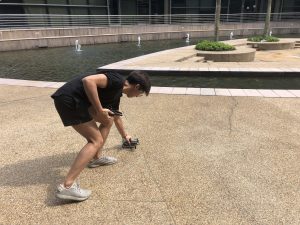
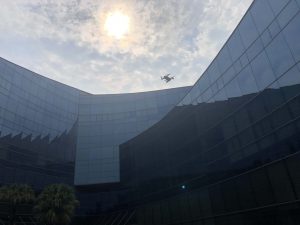
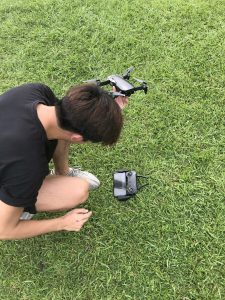
I also got senior Chris to help me film some scenes with his drone! This was done as part of my previous idea of projecting greenery vs the sunken plaza’s reflective surface, which was the scrapped. (Sorry Chris! Thanks for all the trouble :’)))) ) As I don’t want to waste the footage, I’m going to put a small part here:
After that, I stopped working on the space until I was able to which was… 1 day before the presentation.
The Birds
While everything else was happening, I was trying to passively work on the project by collecting images of dead birds. There wasn’t much that I collected, which was strange (but also means it’s a good thing that lesser birds are dying haha)

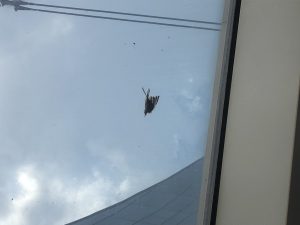
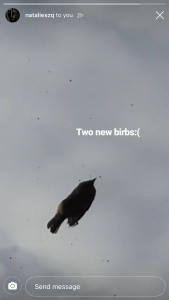
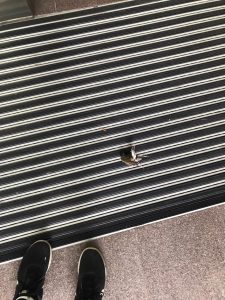
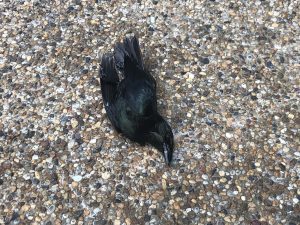
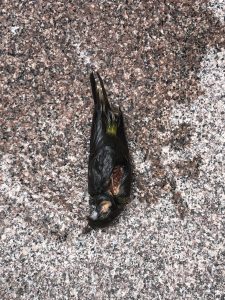
The Space:
There was a lot of trouble to book the space. Firstly, Bharat was always not in, so I was not able to get approval even though I have requested for the space early. When I managed to catch Bharat early November, I was told that the space was to be shared with Prof. Joan Marie Kelly, who will be exhibiting her Painting class artworks. I had to make special arrangements with her in order to secure my space (which is that I will help her class to setup the exhibition).
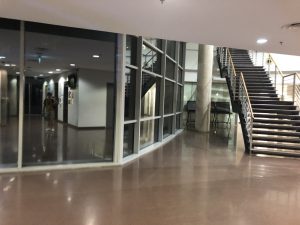
The Setup + Final Presentation:
The afternoon before the presentation, I started setting up. I brought the necessary equipments and logistics down.
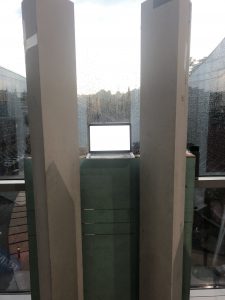
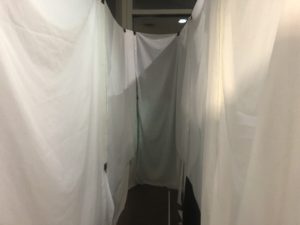
Unfortunately, I did not document the form which was shown during the final presentation as I did not really like it. I already intended to continue working on it after the presentation so I have the newer pictures.
Video documentation of walkthrough:
In the above 2 videos, the participants enter from the back instead of the front. This was due to me thinking that entering from the front was not a very good experience. The profs then tried entering from the other side and thought it was better.
During the discussion we brought up a few points:
- The photos of the dead birds could replace the blood splat which was quite cheesy and doesn’t really look good in terms of aesthetics.
- Going from the front is better as there is a better narrative and it is more intuitive to navigate through.
- The experience worked as the impact sound and the visualisation is able to show what I wanted to show. Digital implementations helped to bring the experience to the next level which was successful.
- There should be variations in the knocking sound which can make the experience more diverse. Also, the sound of the bird hitting window is not the same as just a regular knock.
The projection I shown is this. It’s a compilation video of people hitting against glass, but a picture of a dead bird found in ADM after each hit.
Further analysis
Overall, going in from the front is much better. Although there should be some kind of cue to let people know that they should not walk past the acrylic, and there should be something to distract them to slow them down. This was tested with participants before the final presentation, so that’s why I decided to let participants go from the back (which actually was not any better).
I realised that people usually stand there to see if there are more to the video on the monitor. I usually have to tell people to move on instead. So if possible, I should let participants know that they have to exit.
The sticker sticking part feels out of place now. It’s more of a personal touch than anything that is related to the installation. This is because the installation is experiential, while the sticker part is more activistic. I still kept it as I still want the idea of this artwork to not just “spread awareness”.
Finally, I realised that people don’t really look up to see the splat. This changed after I told participants about the concept before they experience it.
Further Improvements
After the presentation, I continued working on it after a good sleep (yay!).
I removed the area where the projection was and placed the projection in the middle of the “tunnel”. The projection is now projecting onto a piece of cloth which that will have to unveil to move on, which leads to the acrylic sheet.
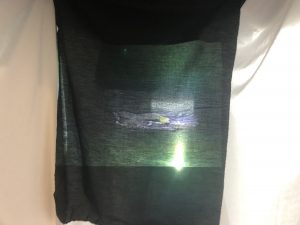
This essentially halves the setup, which makes everything look less clunky.
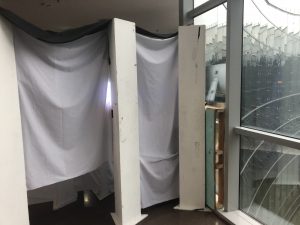
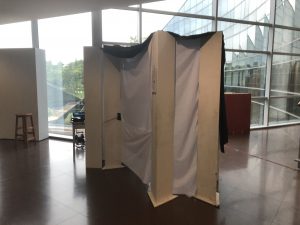
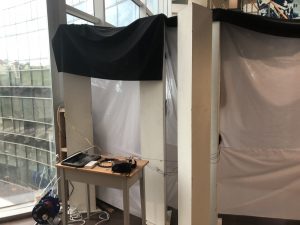
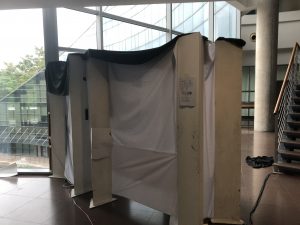
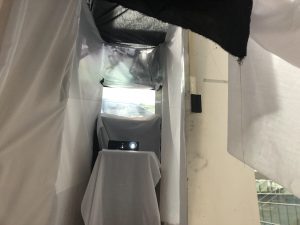
Overall, this makes everything better in a lot of ways.
- Navigation was easier. It was clearer for participants to understand the flow of interaction and the narrative.
- The participants will now move slower in the tunnel as there is a video to watch
- The whole setup is more compact and less detached
However, there are still flaws that I have to address:
- the light in the projection makes the acrylic sheet visible and should be turned off when the cloth is unveiled (this was newly added after discovering this problem)
- Projection on black cloth makes it not very visible (as mentioned by my friend Clemens) and the later changes, I switched to white cloth.
- The visuals are still not the best, the blood splat is still very…. weird. What I did next was to add an overall red hue to make the splat less off-putting, which kind of worked in bringing attention to the screen
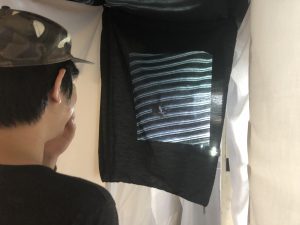
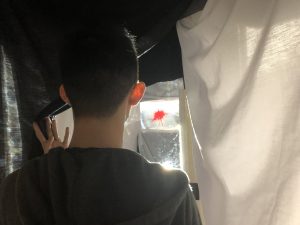
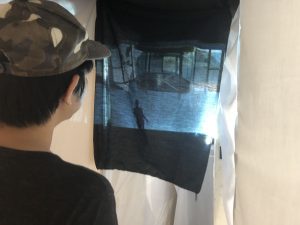
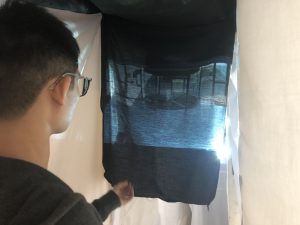
I also created a poster that will be pasted on my installation so people will know what it is about.

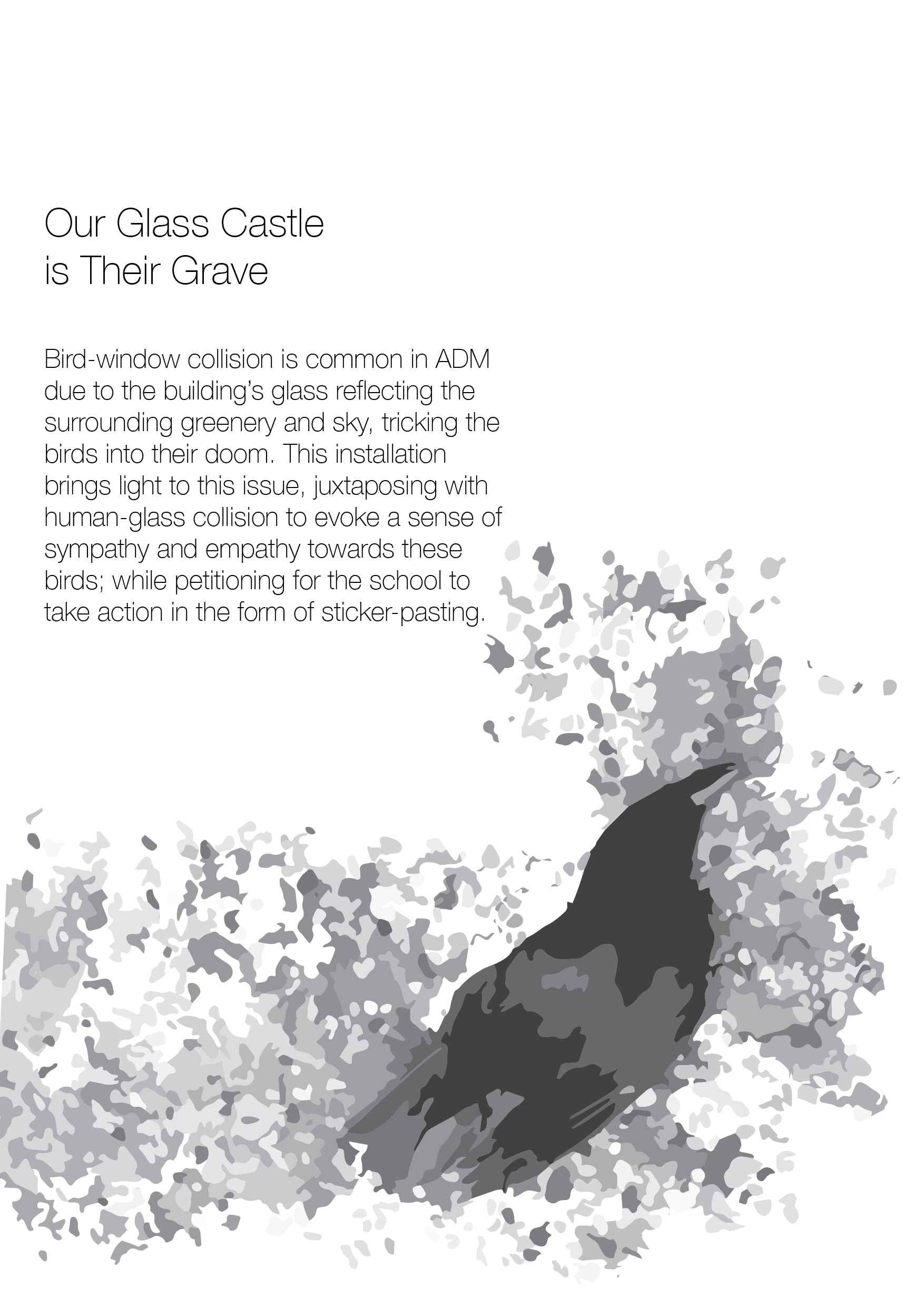
Reiteration of Concept
I would like to go through one more time to summarise everything, and how all the elements worked / not worked out
The concept is from an observation of birds hitting the reflective glass window around the ADM building. Upon further research, I discovered that many birds had died due to the building’s reflective glass windows. I wanted to make an installation that solves this problem through bringing awareness to the problem, letting people know the solution, and asking the school to do something about it.
The installation features an experiential space alongside an activity. The experiential space is a long narrow “tunnel” made of white and black cloth. The use of white cloth was intended for the space to look like a funeral. The tunnel also represents the route into Sunken Plaza.
Inside the space, the first thing to see is the video projection. This projection shows found CCTV footages of people walking into glass. Each time a person walks into the glass, a picture of a dead bird found in ADM is shown. This is done to draw reference to birds flying into glass, and I want it to stir some emotions within people. Watching people walk into glass is funny. But is it funny when you see a bird dying from that? Using that, I want to create a sense of guilt and pity. The video is about a minute long and loops.
When the audience moves on, they will unveil the cloth and walk forward. This activates 2 sensors (previously only 1). 1 sensor will turn off the video that the projector is showing, making it easier for the participants to see what’s in front of them. Another sensor will activate the bird-window collision simulation. This happens on the front, which is a monitor that shows a live video of the window behind the installation, pretending to be an actual glass window. This was inspired by an advertisement by LG and another by Pepsi, which features a screen that looked like windows to trick participants. In my installation, a sound of a “bang” is heard, followed by the screen turning red and a blood splat appearing on the screen. This part is to cue the participants into knowing that a bird has hit the glass, and this let participants understand how it sounds and feel the impact.
Once that interaction is done, the participant can leave from the side, and move on to paste a sticker to ask for change.
Here are some user testing videos:
Note: she didnt notice the video and the blood splat, but was startled by the bang.
Her rewatching the video
Lessons and Reflections
I also learnt that in an art installation, I should focus more on the experience and feelings rather than facts as that is more effective in incepting ideas into people.
I also learnt that when it comes to spaces, it does not have to actually be physical space. It can be something more experiential, which I could focus on rather than creating an entire space for people to move around in. (which is costly and hard to build)
I also learnt that I should have started building much earlier and use the building as a testing ground for me to see how the experience feels.
I also appreciate the feedbacks which are all good especially Biju’s suggestions to having the glass wall that people walk into.
However, overall, I didn’t really enjoy working on this project as it requires a lot of work and money. Setting up a space is really difficult, especially with a space that is quite large like mine. Working alone on this is just not recommended. (There was once when my setup fell and I had to shout for help and the photography people came to help me I must thank them :’) )
I also lost motivation halfway through the semester as the concept wasn’t that strong in terms of the requirements of the module. Still, I’m happy that I pushed through and the installation looks fine now. I guess larger-scale installation stuffs isn’t my thing, and I should build something smaller in future.
More Updates:
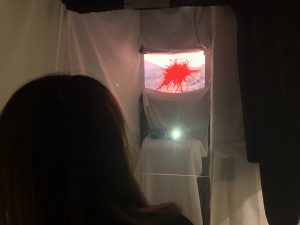
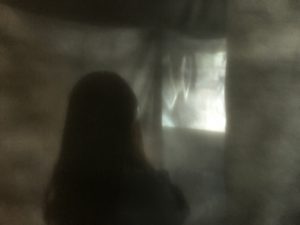
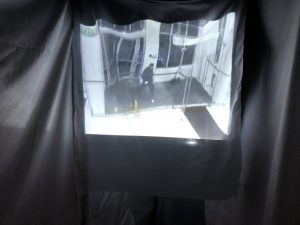
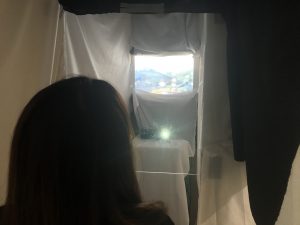
Participants viewing the video & the impact
Videos:
